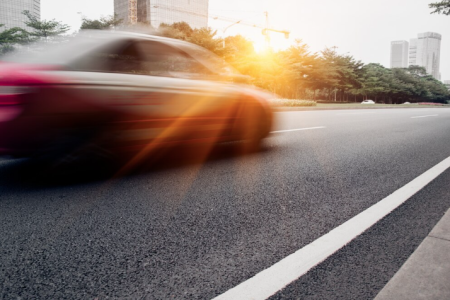Many Aussies guilty of this dangerous habit—are you one of them?
By
VanessaC
- Replies 12
The thrill of the open road can sometimes lead us to forget the importance of adhering to speed limits, especially in areas where the most vulnerable members of our society are present.
A recent survey has revealed a shocking statistic: nearly one in three Australian drivers have admitted to speeding in school zones, a dangerous habit that puts the lives of children at risk.
The survey, conducted by Australian Associated Motor Insurers Limited (AAMI), involved 1000 drivers and found that 33 per cent of respondents confessed to exceeding the speed limit in areas specifically designated to protect children.
This alarming figure has sparked urgent calls for drivers to exercise more caution, particularly during school pick-up and drop-off times.
The situation is further exacerbated by the fact that one in ten drivers admitted to choosing to speed in a school zone because they did not see any children nearby.
Additionally, one in 20 respondents reported having either an accident or a near miss in the vicinity of a school.
Most Australian drivers (72 per cent) confessed to exceeding the speed limit in general, with two-thirds attributing this to not noticing road signs.
According to AAMI's analysis of over 350,000 insurance claims, the most dangerous time on the roads is school pick-up time, between 2 pm and 4:30 pm.
This period sees a significant increase in traffic, with parents and caregivers rushing to collect their children, often leading to impatience and risky driving behaviours.
The survey also revealed a geographical breakdown of the worst offenders.
Queenslanders topped the list, with 40 per cent admitting to speeding in school zones, followed by Victoria and New South Wales at 33 per cent each.
South Australians proved the safest, with less than a quarter (22 per cent) confessing to this dangerous act.
AAMI Claims Manager Leah James emphasised that there is 'absolutely no excuse' for drivers speeding in school zones.
Reduced speed limits in these areas have been in place for decades to protect school-aged children.
'School-aged children, particularly those starting Prep or under ten years of age have limited road safety experience and can behave unpredictably,' Ms James said.
'The onus is on us as adults to protect their lives and ensure they can get to and from school safely every day.'
The consequences of speeding in school zones can be devastating.
A pedestrian hit by a car travelling 40km/h or less has an 87 per cent chance of survival. However, this figure drops dramatically as the speed increases.
Australian Road Safety Foundation Chief Executive Russell White urged Australians to slow down on the roads to decrease road deaths involving children.
'Each year, more than 1200 lives are tragically lost on Australian roads,' he said.
'No one wants to be involved in a car accident with a child, these can be traumatic and have a ripple effect in the community, not just on those involved.'
'School zones are in place to protect lives and prevent fatalities but are only effective when adhered to.'
 What are your thoughts on this issue, members? Have you witnessed dangerous driving in school zones? Share your thoughts and experiences in the comments below.
What are your thoughts on this issue, members? Have you witnessed dangerous driving in school zones? Share your thoughts and experiences in the comments below.
A recent survey has revealed a shocking statistic: nearly one in three Australian drivers have admitted to speeding in school zones, a dangerous habit that puts the lives of children at risk.
The survey, conducted by Australian Associated Motor Insurers Limited (AAMI), involved 1000 drivers and found that 33 per cent of respondents confessed to exceeding the speed limit in areas specifically designated to protect children.
This alarming figure has sparked urgent calls for drivers to exercise more caution, particularly during school pick-up and drop-off times.
The situation is further exacerbated by the fact that one in ten drivers admitted to choosing to speed in a school zone because they did not see any children nearby.
Additionally, one in 20 respondents reported having either an accident or a near miss in the vicinity of a school.
Most Australian drivers (72 per cent) confessed to exceeding the speed limit in general, with two-thirds attributing this to not noticing road signs.
According to AAMI's analysis of over 350,000 insurance claims, the most dangerous time on the roads is school pick-up time, between 2 pm and 4:30 pm.
This period sees a significant increase in traffic, with parents and caregivers rushing to collect their children, often leading to impatience and risky driving behaviours.
The survey also revealed a geographical breakdown of the worst offenders.
Queenslanders topped the list, with 40 per cent admitting to speeding in school zones, followed by Victoria and New South Wales at 33 per cent each.
South Australians proved the safest, with less than a quarter (22 per cent) confessing to this dangerous act.
AAMI Claims Manager Leah James emphasised that there is 'absolutely no excuse' for drivers speeding in school zones.
Reduced speed limits in these areas have been in place for decades to protect school-aged children.
'School-aged children, particularly those starting Prep or under ten years of age have limited road safety experience and can behave unpredictably,' Ms James said.
'The onus is on us as adults to protect their lives and ensure they can get to and from school safely every day.'
The consequences of speeding in school zones can be devastating.
A pedestrian hit by a car travelling 40km/h or less has an 87 per cent chance of survival. However, this figure drops dramatically as the speed increases.
Australian Road Safety Foundation Chief Executive Russell White urged Australians to slow down on the roads to decrease road deaths involving children.
'Each year, more than 1200 lives are tragically lost on Australian roads,' he said.
'No one wants to be involved in a car accident with a child, these can be traumatic and have a ripple effect in the community, not just on those involved.'
'School zones are in place to protect lives and prevent fatalities but are only effective when adhered to.'
Key Takeaways
- Nearly one in three Australian drivers has confessed to driving over the speed limit in school zones.
- Queenslanders were identified as the most frequent speeders in school zones, followed closely by Victorian and New South Wales drivers.
- Calls have been made for drivers to adhere to speed limits in school zones to enhance safety and reduce road accidents involving children.









